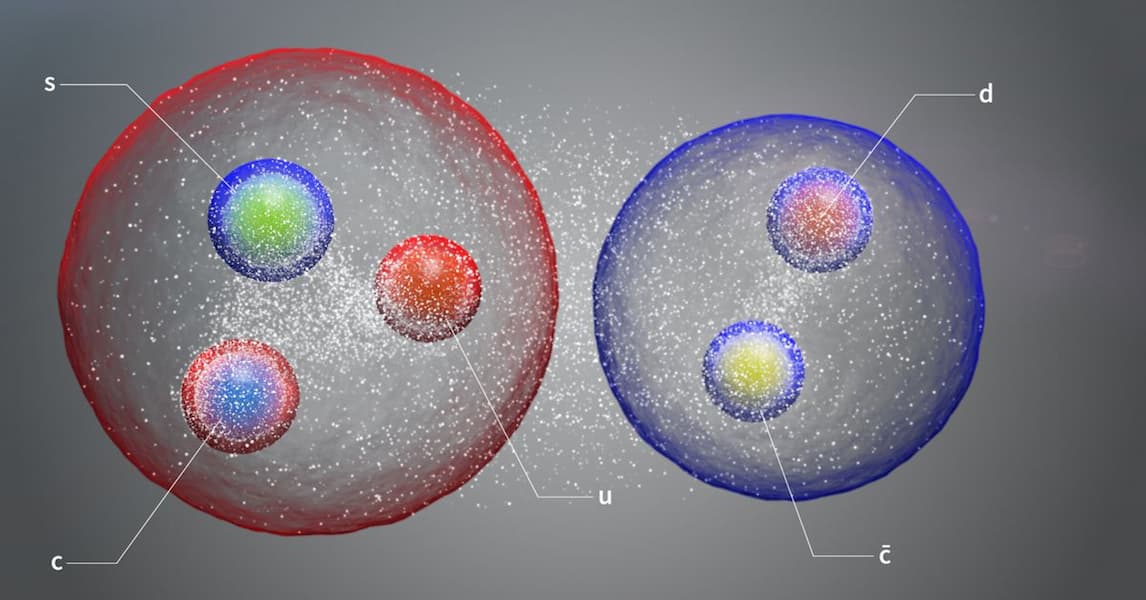According to an announcement on July 5, the European Organization for Nuclear Research (CERN) said that scientists working on the large particle accelerator (LHC) have discovered three more types of subatomic particles that have never been known before.
Speacifically, CERN discovered three more previously unknown types of subatomic particles, including a new pentaquark and a pair of tetraquarks observed for the first time.
Scientists at CERN say they have observed a new type of pentaquark and a previously unknown pair of quaternions, adding the three to the list of hadrons detected through the particle accelerator.
They will help physicists better understand how quarks bind together to form composite particles.
Quarks are elementary particles that often connect with each other in combinations of 2 and 3 to form hadrons such as protons and neutrons – the particles that make up the nucleus of an atom.
However, in rarer cases, these quarks can bind together in combinations of 4 and 5 particles, also known as tetraquarks and pentaquarks.
“The more analyzes we do, the more exotic types of hadrons we discover,” said Niels Tuning, a physicist at CERN.
Observing these new particles and potential future discoveries could help resolve the discrepancy between experimental and theoretical models. In addition, the newly discovered particles advance the LHC’s mission to understand physics beyond the Standard Model. Although widely accepted, the Standard Model of Particle Physics is still incapable of explaining other phenomena – such as the problem of baryon asymmetry (the inequality between matter and antimatter in the Universe) or include the theory of gravity explained by general relativity.
LHC and efforts to perfect the standard model
Designed to explore the structure and interactions of matter at extremely short distances and high energy levels as a means of verifying the Standard Model of particle physics – which can describe three of the four fundamental forces known (electromagnetic interactions, weak and strong, remove gravity).
Up to now, advanced understanding of these fundamental forces has been achieved through elementary particles. Among its most important achievements is the discovery of the Higgs boson – first observed practically in July 2012 and then confirmed in March 2013.
The Large Hadron Collider (LHC) of the European Organization for Nuclear Research. Photo: Julian Herzog.
The discovery of this particle led to the Nobel Prize in Physics being awarded to Peter Higgs and Francois Englert, two of the physicists who had made theoretical predictions about particle behavior and characteristics since the 1960s.
For the full explanation of the Standard Model, one of the difficult parts of the theory is describing the strong force that is responsible for holding the nuclei of every atom together. Each nucleus contains protons and neutrons, each containing elementary particles called quarks.
Physicists suggest that if the strong force were neutralized for even a moment, all matter would instantly disintegrate into free quarks – itself a state thought to have existed at the time the beginning of the Universe.
These quarks – which have never been observed singly – are known to interact with strong force through an exchange of particles known as “gluons”. It is often explained as an analog with photons exchanged by charge carriers through electromagnetic force. However, the strong and electromagnetic forces behave very differently for their particles, which keeps quarks in groups called hadrons.

